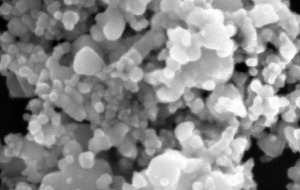26
Jan
California to Take a Hard Look at Nano-Substances
(Beyond Pesticides, January 26, 2011) California’s Department of Toxic Substances Control (DTSC) is asking in-state nanotechnology companies and researchers to share how they’re keeping tabs on several nano-sized metals, as evidence continues to emerge that these substances may have long-term implications for the environment. Nano-sized materials, now incorporated into many consumer products including paper wrapping, clothing and cosmetics, are currently not regulated and have not been assessed for hazards that have the potential to impact public health and the environment.

Late last month, the DTSC put out a request for information about nano-sized silver, zero valent iron, titanium dioxide, zinc oxide, cerium oxide and quantum dots. Specifically, the agency wants to know what tools companies and researchers are using to analyze these materials””a key question for regulators across the country in the effort to understand the impact of the substances””over a broad range of areas, including air, water, soil, sewage sludge and urine.
Nanotechnology, which capitalizes on unique properties of super-small particles, is already in use in manufacturing items like bike frames, skin creams and cancer treatments. As these tiny materials hit the market, there are huge gaps in what scientists know about their properties. Jeffrey Wong, DTSC’s chief scientist, said in an interview that his agency’s call for information ””its second such request, after a similar move involving carbon nanotubes two years ago”” is aimed at informing consumers. California, with its concentration of high-tech companies, is a hotbed for nanotechnology, Mr. Wong said, and the DTSC wants to push as much information into the public sphere as possible.
The basic question the agency is asking, Mr. Wong said, is, “What do you know about your materials?” Several of the metals, such as nanosilver and titanium dioxide, are of interest because they’re being used in consumer products. Nanosilver, for example, is used as an antibacterial agent in athletic clothing, while titanium dioxide is in some sunscreens.
Some studies have shown that these materials are turning up in end-stage sewage sludge, raising questions about long-term problems. Other materials on the list are even closer to the water supply, for example: zero valent iron is being used as an ingredient in efforts to clean up polluted groundwater. “The wastewater agencies have no clue” how to measure the amount of these metals, or what to do to get them out if they do pose a hazard, Mr. Wong said.
Prompted by a petition submitted in 2008 calling for the regulation of nanomaterials and to stop the sale of 250+ consumer products now using nanosized versions of silver, the U.S. Environmental Protection Agency (EPA) stated that an active or inert ingredient would be considered “new” if it is a nanoscale material. The new policy would apply even when a non-nanoscale form of that same active or inert is already in a product registered under the Federal Insecticide, Fungicide, and Rodenticide Act (FIFRA). EPA is in the process of preparing a Federal Register notice on nanomaterials and pesticide products. The notice will announce a new interpretation of FIFRA Section 6(a)(2) regulations, that the presence of a nanoscale material is reportable under FIFRA Section 6(a)(2) for environmental effects. This controversial interpretation would apply to already registered products, as well as products pending registration. However, this new policy has not been finalized or put into effect, while under review by the Office of Management and Budget (OMB). Many attribut the holdup to industry backlash. Pesticide manufacturers routinely fail to inform EPA when their products contain nanoscale particles. Consumers are left in the dark about their potential exposure as these products are currently being marketed under ambiguous labels.
Nanotechnology is a powerful new platform technology for taking apart and reconstructing nature at the atomic and molecular level. Just as the size and chemical characteristics of manufactured nanoparticles can give them unique properties, those same new properties —tiny size, vastly increased surface area to volume ratio, high reactivity— can also create unique and unpredictable human health and environmental risks. Scientists and researchers are becoming increasingly concerned with the potential impacts of these particles on public health and the environment. A new study by scientists from Oregon State University (OSU) and the European Union (EU) highlights the major regulatory and educational issues that they believe should be considered before nanoparticles are used in pesticides.
While silver is known to be toxic to fish and aquatic organisms, recent scientific studies have shown that nanosilver is much more toxic and can cause damage in new ways. Exposures are occurring during use and disposal. Concerns over nanosilver were first raised by national wastewater utilities in early 2006. A 2008 study shows that washing nanosilver socks releases substantial amounts of the nanosilver into the laundry discharge water, which will ultimately reach natural waterways and potentially poison fish and other aquatic organisms. Another 2008 study finds that releases of nanosilver can destroy benign bacteria used in wastewater treatment.
Copper nanoparticles could be released from the treated wood during sawing or machining, cleaning, through normal wear and tear, or from product decomposition, and then become available for potential inhalation or ingestion. Reports stated in early 2009 that over five billion board feet of wood have been treated with its “micronized” copper products, so the potential for consumer exposure to nanoscale copper particles could be quite large.
In 2007, a broad international coalition of 40 consumer, public health, environmental, and labor organizations, including Beyond Pesticides, released the Principles for the Oversight of Nanotechnologies and Nanomaterials, calling for strong, comprehensive oversight of the new technology and its products. Beyond Pesticides has since advocated for a precautionary course of action in order to prevent unnecessary risks to the public, workers and the environment. For more information on nano pesticides visit the antimicrobial webpage.
Source: New Haven Independent
OMB Watch
Photo Courtesy Oregon State University










